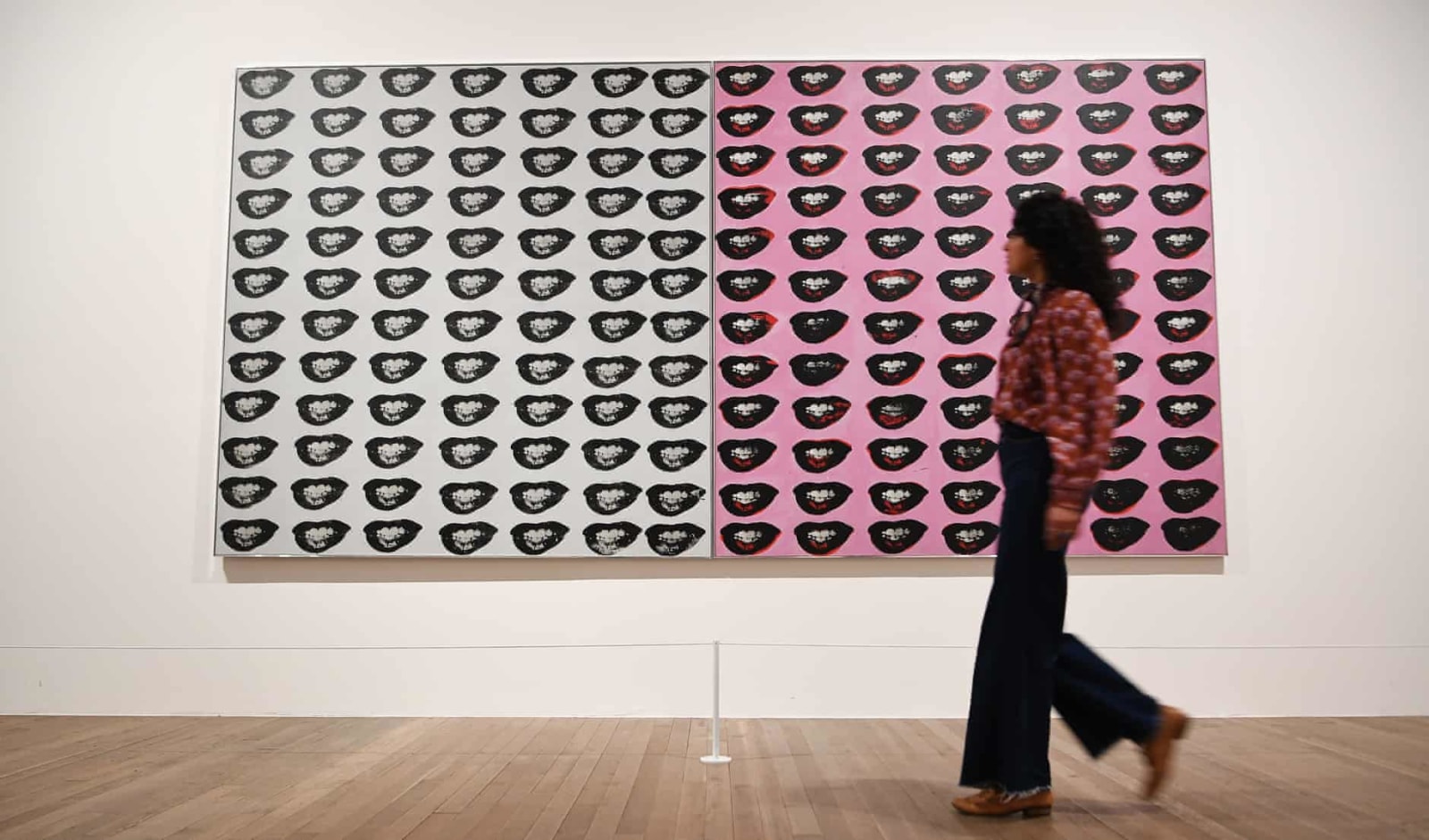Emilia Ong on Andy Warhol at Tate Modern
Observer/Anthony Burgess prize for arts journalism 2021: The nominee recalls the selfie-snapping crowds at the Tate’s big Warhol show last March, which closed just days after opening, then moved online…
Here she is, disembodied, duplicated and cast adrift upon a sea of lurid pink. Only it’s not her, it’s her mouth, and 60 of them… Marilyn’s mouths were the first splash of really recognisable Andy Warhol that I encountered in the Tate’s retrospective last year. It was also one of the pieces that commanded about it a perpetual puff of a queue. Phones were wielded: more than Warhol, what visitors were interested in was themselves looking at Warhol.
But who can blame them? It is perhaps unfortunate that so many of the pop-era pieces now look like nothing more than Ikea prints, and seem equally fast and cheap. Maybe that’s why, no matter how bombastic the work, this plodding show never quite managed to swell to anything like life. Complexity has been lost inside sheer quantity; we’ve become so used to the Warhol aesthetic that it’s difficult to feel anything other than numb. Yes, the originals look just like the prints. What else is there to do but take a photo?
Barely a week after the show opened in March 2020, lockdown began. An online video was made available. Poor cousin to the original? Frankly, no. Little was lost with online viewing, and for an exhibition that positioned itself as being “about the man himself”, that might be seen as particularly damning. But we should not be so hasty. Warhol would probably have been rather pleased by the notion of his art forced on to phones and into sticky palms: somehow, that’s just the way it should be. Even better, in fact, for it was exactly his point that the modern world flattens what ought to be extraordinary into the ordinary. Accidental or not, we could think of it as a curatorial triumph to have recreated that very same sensation when it came to Warhol’s art. In a curious twist, it was precisely the show’s flatness that made it a success.
Some features of the retrospective were not replicable on screen – the experience, for instance, of standing inside a room wallpapered in foil (paean to the Factory years, and yes, a selfie hotspot). Then there were the silver balloons, whose hoary cluster returned to us our own warped images. These efforts to enliven our experience felt gimmicky. What we were forced to acknowledge was that experiencing Warhol fails because Warhol does not want to be experienced: for all his “look at me” flamboyance, Warhol’s art is neither warm nor expansive. Instead it vibrates with a taut, compressing tension: here is a man who does not want to be seen. Only, he wants to do it by being very, oh so very, seen. Hiding in plain sight is Warhol’s trick; it is also his genius, and his tragedy.
You can see how the curators had attempted to make “the man himself” freshly appealing. Frequently we are reminded of Warhol’s outsider status. It is not a false positioning, but it’s a convenient one: at a time when museums are being decolonised and reading lists queered, Warhol’s story fits in nicely. He grappled with his identity as a queer, lower-class immigrant all his life, and it seems like he could never quite make up his mind whether he wanted in. Did he really wish to be like everybody else, as he is quoted as saying?
Being trampled into sameness by society was both what Warhol feared, and his way of dealing with it. Fear and desire come full circle: I’ll crush myself, so you don’t have to, the works seem to say. He had plastic surgery, wore a toupee: it doesn’t take a psychiatrist to perceive that he cared cripplingly for the opinions of others. However, nothing about the “fright wig” of later years helped him melt into the background. Ultimately, the boldness of the Warhol look, which ambushed his desire to fit in even as it purported to aid it, ended up shining a light on his vulnerability.
Valerie Solanas claimed to have shot Warhol because he had too much control over her life, and one gets a sense of what she was getting at. If the measure of Warhol’s work is the extent to which he made it as ubiquitous and unremarkable as his mass-produced subjects, he succeeded. But his attempt to control the narrative, to press himself into a form he imagined to be more acceptable, faiiled. The wigs on display at Tate Modern, severed from their master, spoke to me only of pathos. They may even have been a form of sabotage: Look at me trying to blend in. Or: Look at you all, trying to blend in. Was this his big joke? Was Warhol mocking us?
As I left, I could not help but recall Marilyn’s mouths: hanging half open, and poised to devour us.
















































































































































































